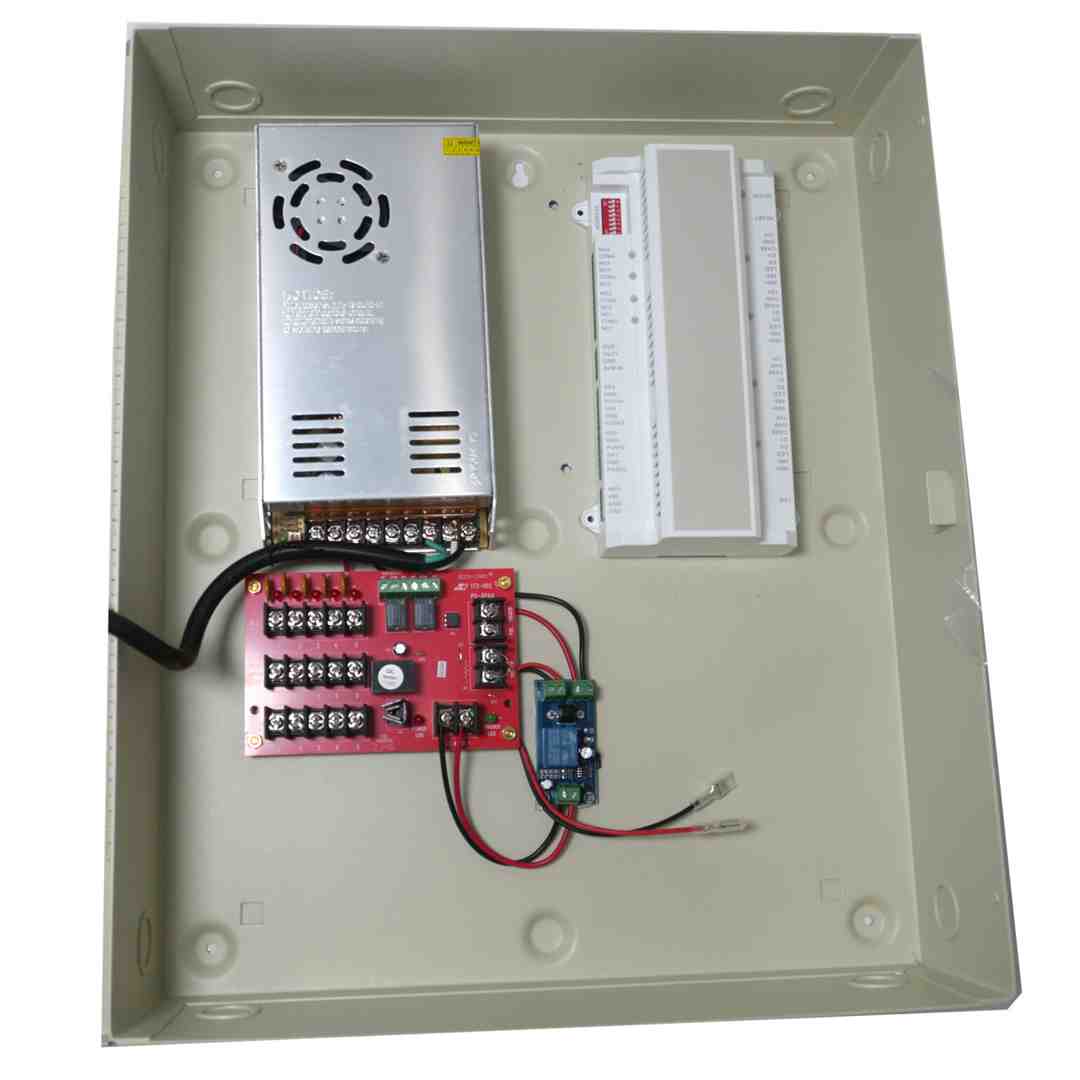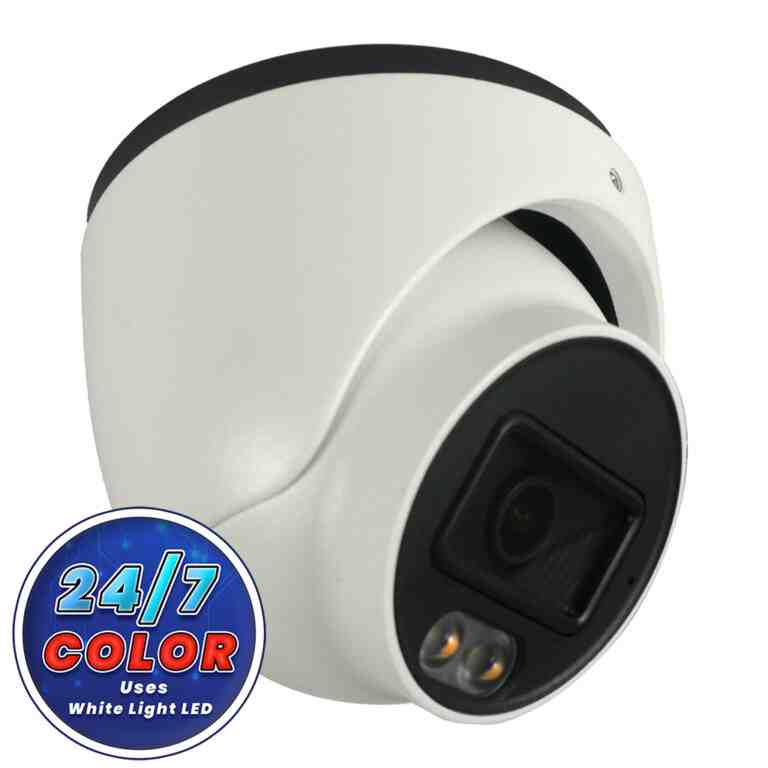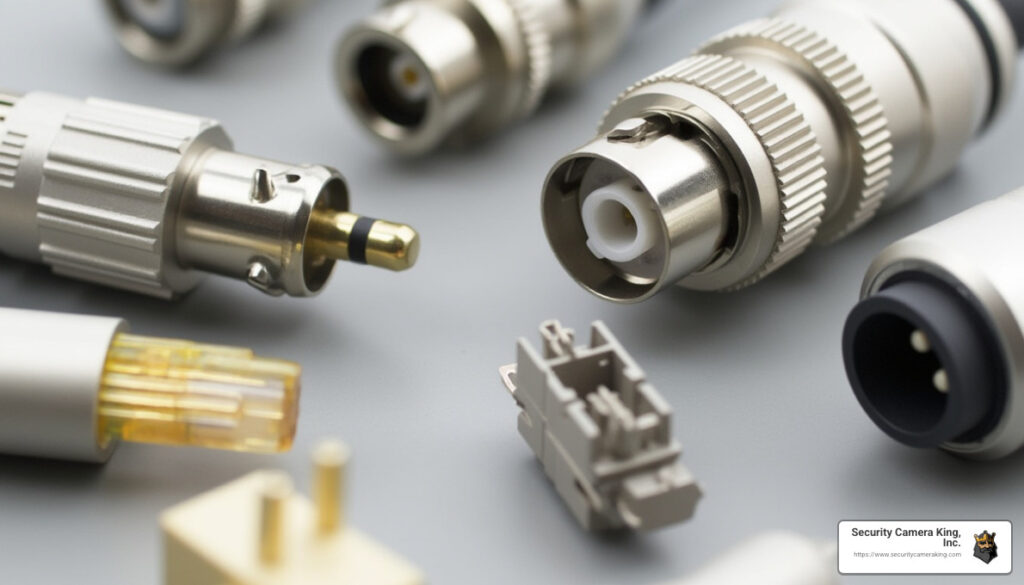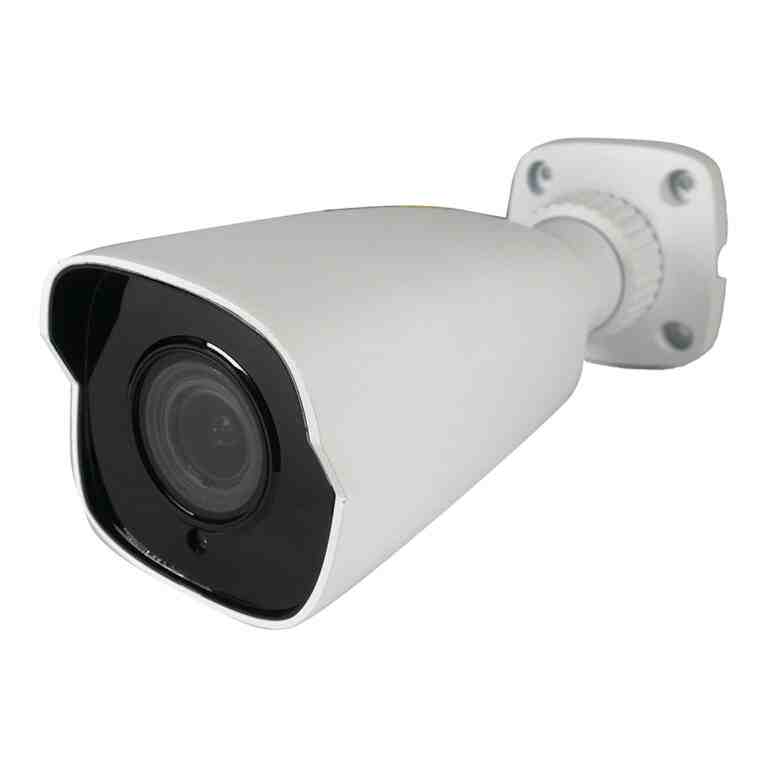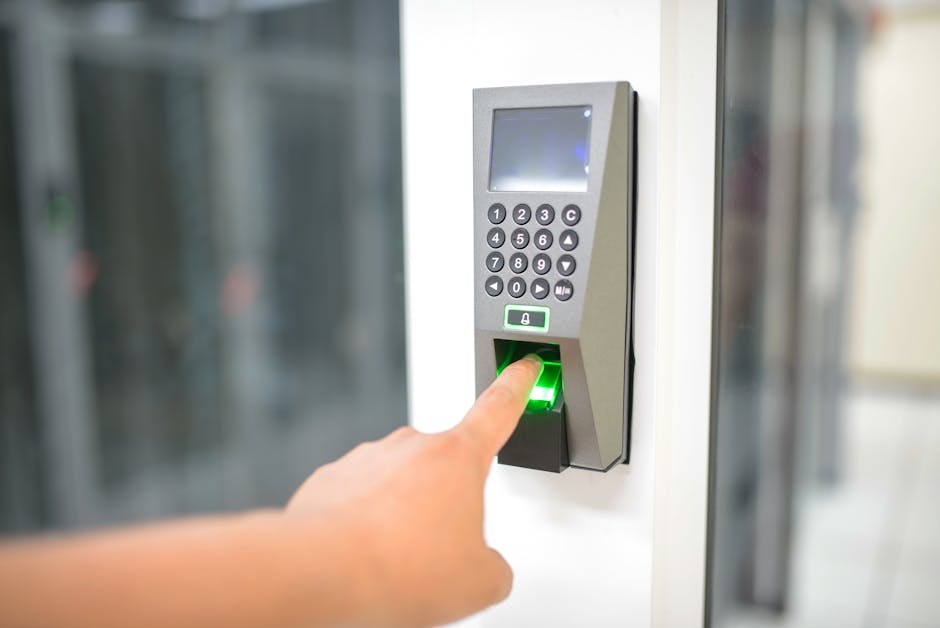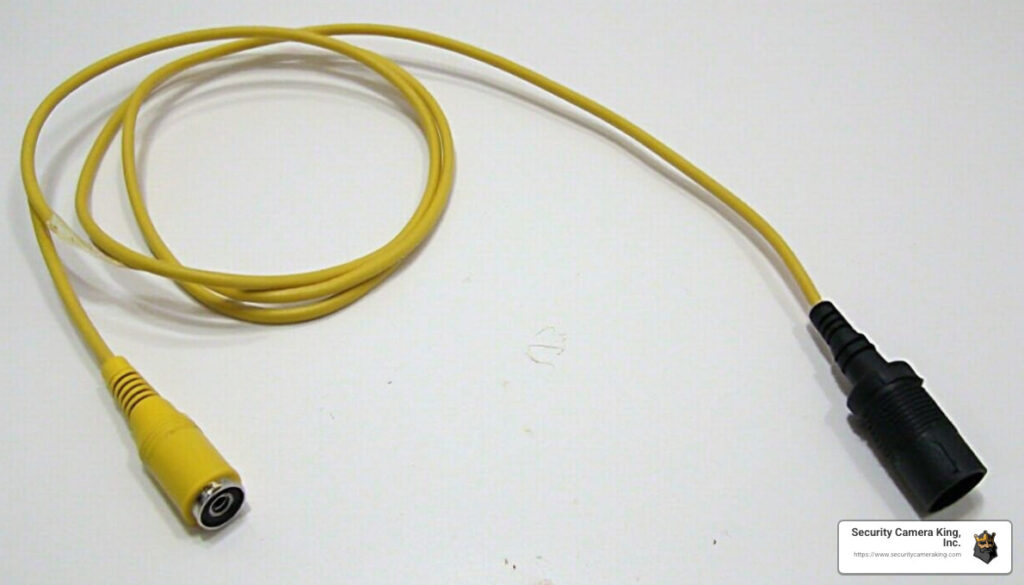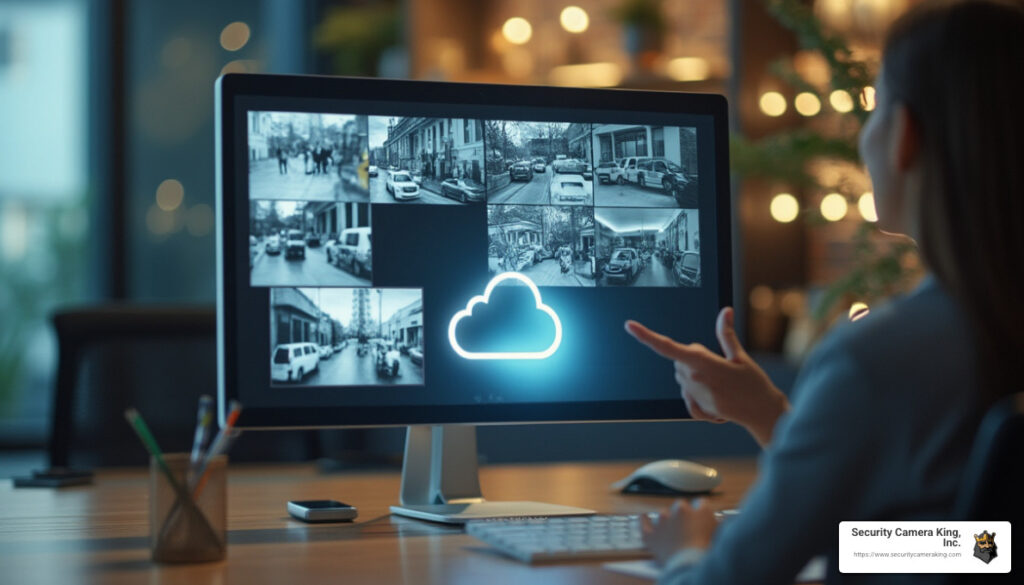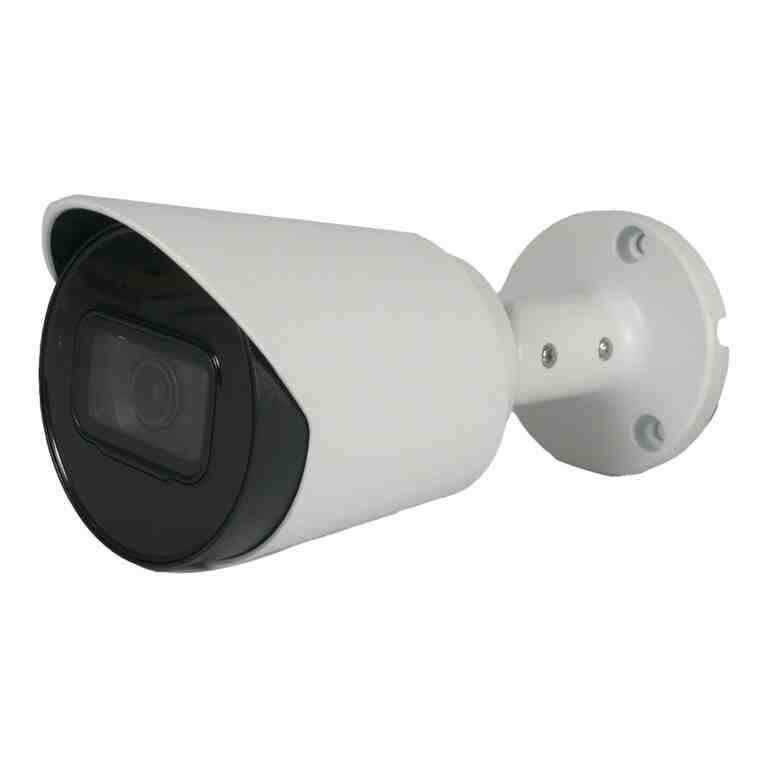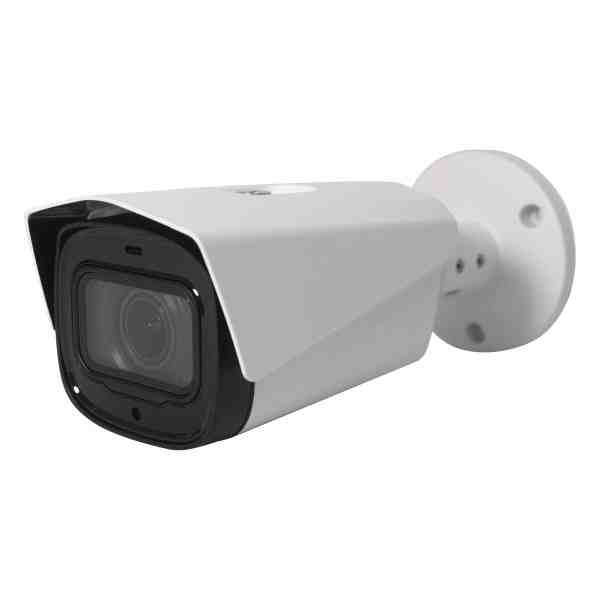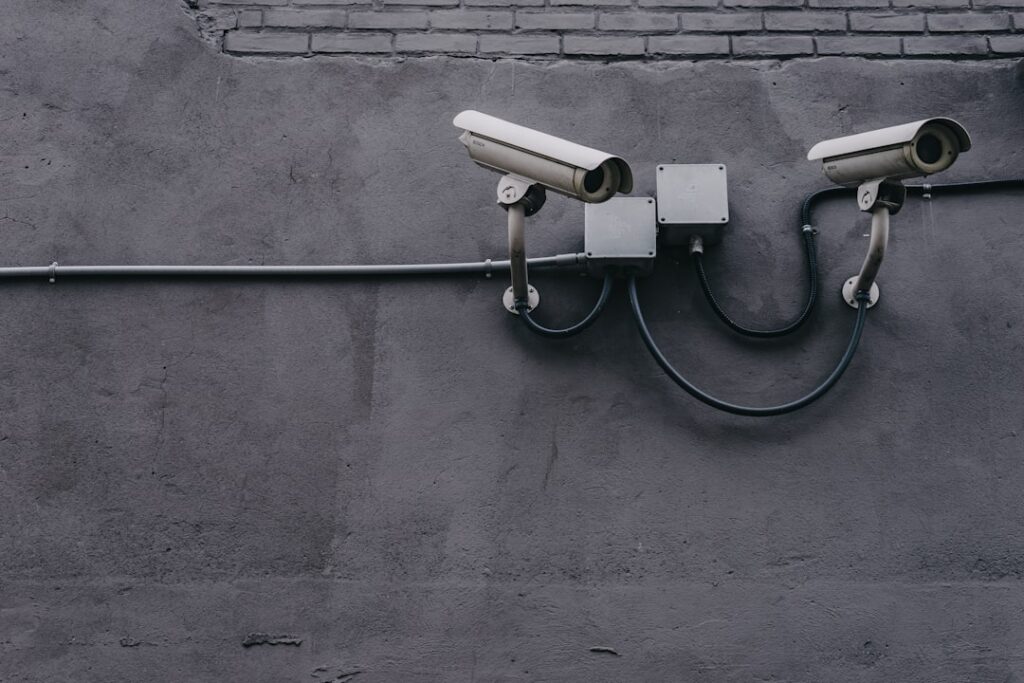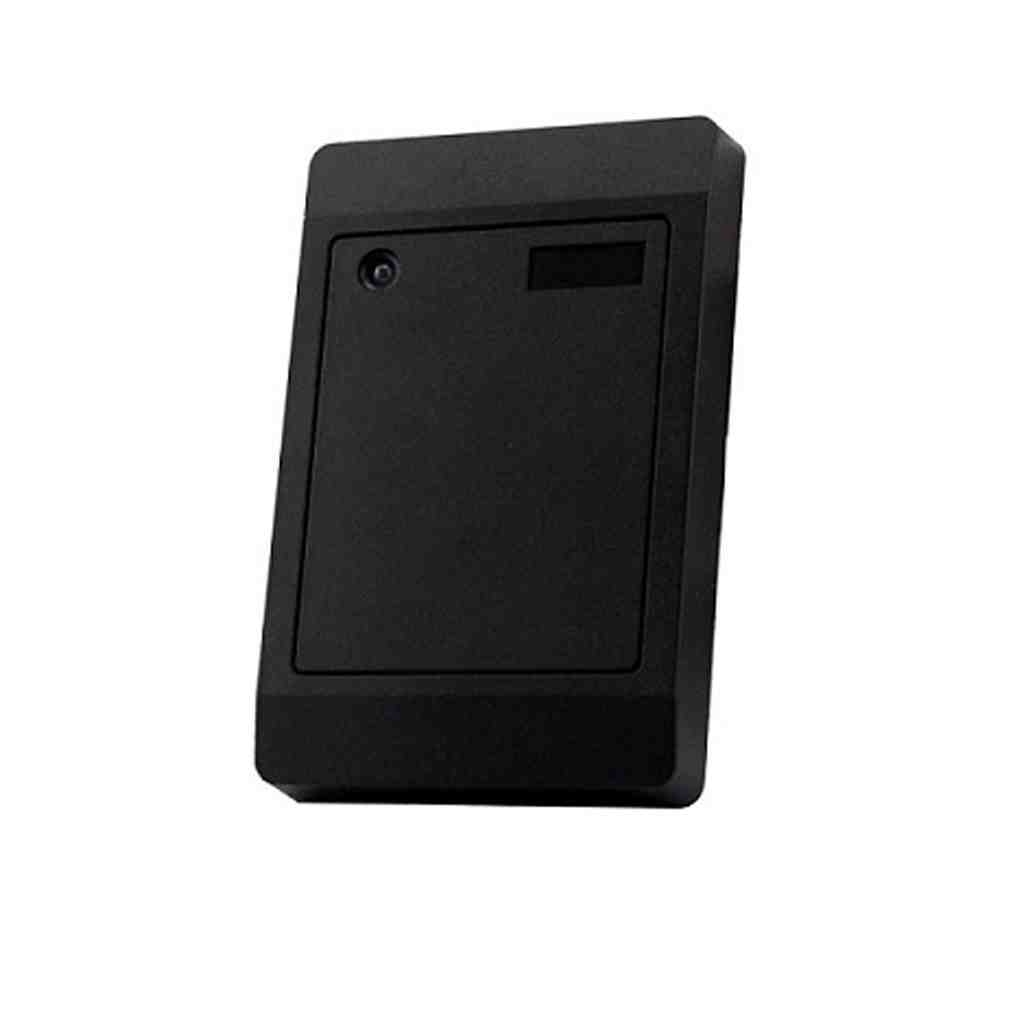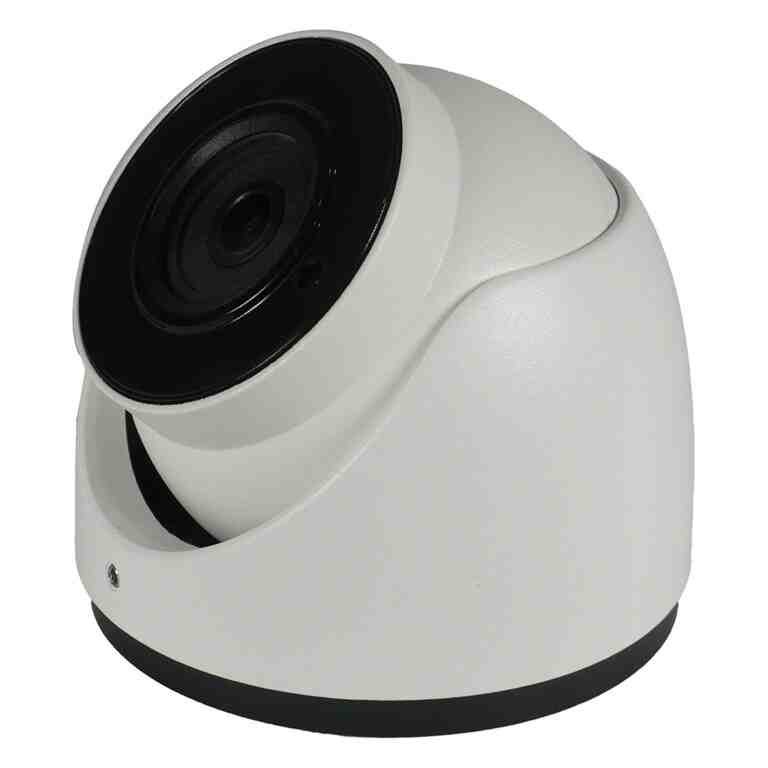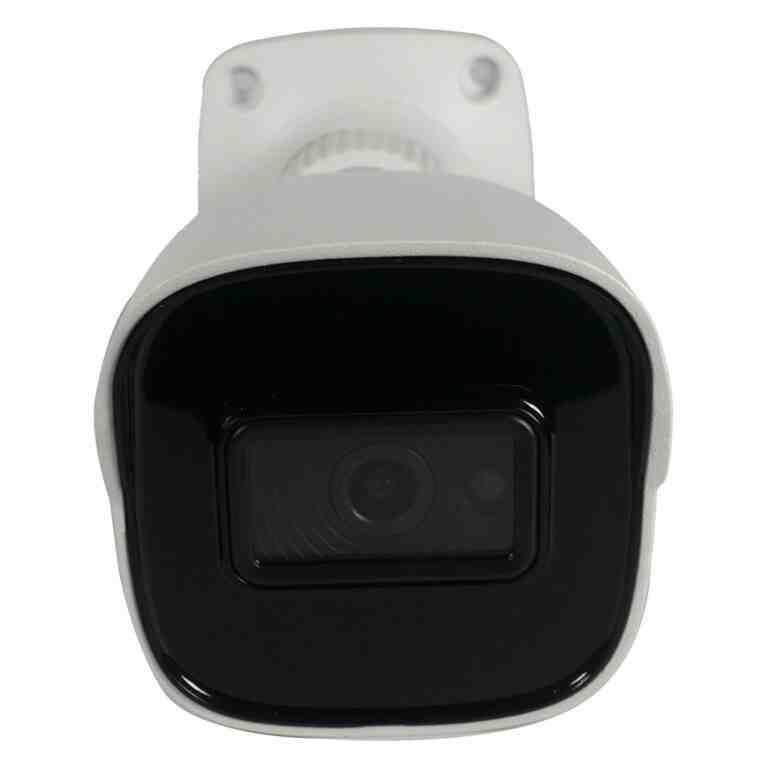security camera power supplies: 10 Essential Tips for Reliable 2025
Why Security Camera Power Supplies Are Critical for Your Surveillance System
Ever wonder what keeps your security cameras vigilant while you sleep? The unsung heroes of any surveillance system are the security camera power supplies. These essential components aren’t just accessories—they’re the lifeblood that keeps your cameras running reliably around the clock.
At Security Camera King, we’ve seen how the right power supply makes all the difference between a system that faithfully guards your property and one that leaves you vulnerable at the worst possible moment.
Most security cameras rely on 12V DC power, though you’ll find various options in the field. Connecting a camera to an incompatible power source isn’t just a mistake—it can instantly damage your equipment’s circuit board and leave you starting from scratch.
For larger installations, proper power planning becomes even more crucial. We recommend multiplying your total power requirements by 1.3 to handle those peak usage moments, and never pushing your power supply beyond 80% of its maximum capacity. This simple rule of thumb has saved our customers countless headaches and emergency service calls.
Distance creates another challenge in surveillance setups. Once you extend beyond 100 feet with standard 18 AWG wire, voltage drop becomes your enemy. The solution might be thicker cables, stepping up to 24V AC power, or embracing Power over Ethernet technology—each with its own advantages depending on your specific situation.

Why Power Matters
Think of your surveillance system as a vigilant guard who can never blink. Even a few seconds of power loss creates dangerous blind spots in your security coverage. When a suspicious event occurs, finding a gap in your footage can be devastating.
Proper, consistent power delivers three critical benefits:
First, it ensures uninterrupted recording with no missing moments. Second, stable power significantly extends your equipment’s lifespan by preventing the stress of power fluctuations. And third—something many people overlook—it protects your warranty, as many manufacturers will void coverage if improper power supplies are used.
Here at Security Camera King, nearly a third of our service calls stem from power-related issues. It’s a pattern we’ve seen repeatedly: customers who invest a little more upfront in quality security camera power supplies save thousands down the road in replacement equipment, emergency service, and peace of mind.
When your home or business security is on the line, the foundation of reliable power isn’t where you want to cut corners. After all, even the most sophisticated camera is just an expensive paperweight without the right power keeping it alive.
Understanding Security Camera Power Supplies
When it comes to keeping your surveillance system running smoothly, security camera power supplies are the unsung heroes behind the scenes. These essential components come in various formats, each designed for specific situations and needs.
Types of security camera power supplies
Think of power supplies as the heartbeat of your security system. At Security Camera King, we’ve seen countless installations where the right power supply made all the difference between a reliable system and a frustrating one.
Plug-in adapters are the simplest option – they’re those familiar wall-wart style power bricks that connect a single camera to a standard outlet. They’re perfect for small setups, though they can quickly create a tangled mess of cables when you’re running multiple cameras.
For multi-camera installations, distribution boxes are a game-changer. These centralized units can power 4, 8, 9, 16, 18, or even 32 cameras from a single source. Not only do they create a cleaner installation with fewer cables running everywhere, but they also make maintenance much simpler – one place to check when troubleshooting power issues.
If you’re using IP cameras, PoE switches offer an neat solution by sending both power and data over a single Ethernet cable. I’ve personally installed systems where switching to PoE cut installation time in half and made the whole setup look much more professional.
For businesses that can’t afford even a minute of downtime, a UPS backup system is essential. These battery backups keep your cameras rolling during power outages – absolutely critical for high-security areas like banks, jewelry stores, or any location where continuous monitoring is non-negotiable.
And for those truly remote locations without reliable electricity, solar and battery systems provide a sustainable alternative. We’ve helped customers monitor everything from remote gates to wildlife areas using these eco-friendly power solutions.
Browse our comprehensive range of Security Camera Power Supplies to find the perfect match for your specific needs.
12V DC and 24V AC Explained
Most security cameras run on one of two voltage standards, and understanding the difference can save you headaches down the road.
12V DC (Direct Current) is the most common option for standard fixed cameras. It’s generally more affordable and easier for DIY installations, but there are some important details to remember. Polarity matters with DC power – connecting the positive and negative wires incorrectly can damage your equipment. Most 12V DC adapters are center-positive, meaning the inside pin carries the positive charge.
24V AC (Alternating Current) shines in situations involving PTZ cameras with motors or long cable runs. Since the current alternates, polarity doesn’t matter when connecting – a nice advantage during installation. While 24V AC supplies typically cost more upfront, they can save money in the long run by reducing the need for thicker cables on long runs.
Many professional installers (myself included) prefer dual-voltage cameras that can accept either 12V DC or 24V AC. This flexibility is invaluable when you’re working with existing infrastructure or planning for future expansion.
For a deeper dive into how these different voltages work with your cameras, our guide on How Do Power Supplies Work With Security Cameras? covers everything you need to know.
Choosing security camera power supplies for special environments
Your environment plays a huge role in determining which power supply will work best and last longest.
For indoor environments with controlled temperatures and protection from the elements, standard plug-in adapters usually work perfectly fine. There’s less concern about moisture damage, and maintaining or replacing components is typically straightforward.
Outdoor environments demand more robust solutions. Here in Florida, where Security Camera King is headquartered, we’ve learned a thing or two about protecting electronics from harsh conditions. Weatherproof enclosures are absolutely essential, and your power supplies need temperature ratings that match local climate extremes.
Always look for UL Listed outdoor power supplies to ensure safety compliance – this isn’t just a nice-to-have, it’s often required by insurance companies and local building codes. And if you’re in an area prone to thunderstorms (like we are in Florida), investing in proper lightning and surge protection can save you thousands in equipment replacement costs.
The difference between a properly rated outdoor power supply and a standard indoor one might seem small, but I’ve seen how quickly Florida humidity and heat can destroy electronics that aren’t properly protected. Trust me, spending a little more upfront on the right security camera power supplies for your environment will save you money and frustration in the long run.
Matching Voltage, Current, and Calculating System Load
I’ve seen this scenario hundreds of times in my years at Security Camera King: a customer calls in frustrated because their cameras keep rebooting randomly or their night vision barely works. The culprit? An undersized power supply trying to do too much heavy lifting.
Getting your power calculations right isn’t just about being thorough—it’s about ensuring your security system works when you need it most.
Determining Individual Camera Requirements
Think of each camera as a hungry mouth to feed with electricity. How much it needs depends on a few key factors:
First, always check the specification sheet that came with your camera. This is your bible for power requirements, telling you exactly what voltage (V) and current (A) your camera needs to operate properly.
Second, take note if your camera has infrared (IR) LEDs for night vision. These little lights are power-hungry creatures, sometimes doubling the electricity consumption when they kick on after dark. A camera that draws 0.5 A during daylight might suddenly need 1 A at night.
Third, consider any moving parts like PTZ motors. These mechanical components need extra juice to pan, tilt, and zoom. While a standard fixed camera might be happy with 12 V DC and 0.5–1 A, a PTZ camera often requires 24 V AC and a hefty 1.5–3 A of current.
If you’re adding 12 V DC cameras to an existing 24 V AC system, don’t worry about replacing everything. Our Voltage Converter 24VAC to 12VDC 1.5A bridges that gap nicely, letting old and new equipment work together harmoniously.

Sizing Power Supplies for Multi-Camera Systems
When it comes to powering multiple cameras, simple addition isn’t enough. I always tell customers to follow this three-step process:
First, add up all the current requirements from each camera. If you have 16 cameras each drawing 0.35 A, that’s a total of 5.6 A (16 x 0.35 A).
Next, multiply by 1.3 to account for peak usage scenarios. This is when all your cameras might be working hardest—like when every IR light kicks on simultaneously at dusk. Our 5.6 A now becomes 7.28 A.
Finally, apply the 80 % rule by dividing by 0.8. This ensures your power supply isn’t constantly running at maximum capacity, which would shorten its lifespan dramatically. Our 7.28 A becomes 9.1 A.
So for our 16-camera example, you’d need a power supply rated for at least 9.1 A. Always round up rather than down—a 10 A supply would be perfect here.
For a 9-camera setup, our 9 Channel 12V DC High Power CCTV Power Distribution Box UL Listed provides the ideal solution. It not only delivers centralized power management but also gives you individual outputs for each camera, making troubleshooting a breeze if issues arise.
Future-proofing your system with a slightly larger power supply than you currently need gives you room to grow. It’s much easier to add another camera to an existing system with spare capacity than to replace your entire power infrastructure later on.
Dealing with Distance: Voltage Drop and Cable Strategies
Ever set up a camera at the far end of your property only to find it keeps rebooting or has weak night vision? You’re probably experiencing voltage drop—the silent killer of many security systems. As electricity travels through wire, it encounters resistance, causing voltage to decrease over distance. This is especially problematic with 12 V DC systems, where even a small drop can make a big difference.
Calculating Voltage Drop on 12V Runs
I remember helping a customer who couldn’t figure out why his driveway camera kept shutting down at night. The culprit? Voltage drop. Using Ohm’s Law, we can calculate this with a simple formula:
Voltage Drop = (2 x Cable Length in feet x Current in amps x Resistance per foot) / 1000
Let’s break this down with a real example using 18 AWG wire (which has resistance of about 6.4 ohms per 1000 feet):
For a camera drawing 0.5 A with a 100-foot cable run:
- Voltage drop = (2 x 100 x 0.5 x 6.4) / 1000 = 0.64 V
This means your 12 V camera would actually receive only 11.36 V. Most cameras can handle this small drop. But stretch that same wire to 200 feet, and the drop increases to 1.28 V, leaving only 10.72 V—potentially below your camera’s minimum operating voltage. When this happens, you’ll notice problems like weak infrared performance, image flickering, or random reboots.
Best Practices for Long Cable Runs
At Security Camera King, we’ve developed several tried-and-true solutions for conquering the voltage drop challenge:
Thicker cable is your friend. Think of it like a water hose—the wider the hose, the more water flows through. Similarly, thicker wire (lower AWG number) allows electricity to flow with less resistance. For runs up to 100 feet, 18 AWG typically works fine. Between 100–200 feet, step up to 16 AWG. For 200–300 feet, 14 AWG becomes necessary. Beyond 300 feet? That’s when you should consider alternative approaches.
Switch to 24 V AC power for significant advantages on long runs. Since 24 V starts with twice the voltage, it can tolerate more drop before causing problems. This is why professional installers often prefer 24 V AC for commercial installations with longer cable runs. The downside? It’s usually more expensive than 12 V equipment.
PoE (Power over Ethernet) solutions are my personal favorite for long distances. Standard PoE can reliably reach up to 328 feet (100 meters), and with PoE extenders, you can go even further. The beauty of PoE is that it combines power and data in a single cable, simplifying installation while reducing voltage drop concerns.
Consider separate power supplies as a practical alternative. Sometimes the simplest solution is to place power supplies closer to distant cameras. This might require additional weatherproof enclosures, but it’s often cheaper than running extremely thick wire over long distances.
For installations where cameras are more than 200 feet from the power source, we typically recommend switching to 24 V AC or PoE. I’ve seen countless customers solve their mysterious camera issues simply by addressing voltage drop properly. A security system is only as reliable as its power supply!
Power Options and Distribution Solutions
When you’re setting up a multi-camera surveillance system, how you distribute power isn’t just a technical detail—it’s the backbone of your entire setup’s reliability. Let me walk you through the options that will keep your cameras running smoothly.
When to Choose a Centralized Power Supply Box
There’s something deeply satisfying about a well-organized security installation, and centralized power distribution boxes are a big part of that satisfaction. Instead of a tangled mess of individual adapters, these boxes create one clean power hub for your entire system.
A centralized power supply gives you neater wiring with just a single power input, making your installation look professional rather than like a spider web of adapters. It also allows for easier monitoring since you can check the status of your entire system’s power from one location. When something goes wrong (and eventually, something always does), troubleshooting becomes much simpler because each camera output typically has its own fuse.
For small businesses or homes, our 4 Channel CCTV Power Distribution Box hits the sweet spot of functionality and value. For larger commercial installations, the 16 Channel Power CCTV Power Distribution Box provides robust power management with room to grow.
I’ve helped countless customers who initially installed individual power adapters only to call us later wanting to upgrade to a centralized box. They always mention how much cleaner their wiring closet looks afterward, and how much easier it is to maintain their system.
Pros and Cons of PoE for security camera power supplies
Power over Ethernet (PoE) technology has been a game-changer in the security industry. By sending both power and data over a single Ethernet cable, it simplifies installation while improving reliability. But is it right for your system?
On the plus side, PoE gives you single-cable installation, cutting both labor and material costs dramatically. You’ll also enjoy extended reach with less voltage drop (up to 328ft/100m), which solves many of the distance problems we discussed earlier. I love the ability to remotely power cycle cameras when they need a reboot—no more climbing ladders or driving to remote locations just to unplug a frozen camera!
PoE follows standardized protocols (IEEE 802.3af/at/bt), ensuring compatibility across brands and making future upgrades more straightforward. When paired with a UPS backup system, you can keep your entire camera network running during power outages from one central location.
However, PoE isn’t perfect for every situation. The initial equipment cost is higher than traditional power methods, and you’ll need either PoE-compatible cameras or adapters. Standard PoE (802.3af) provides a maximum of 15.4W per port, which is plenty for most fixed cameras but might not suffice for PTZ models or cameras with heaters.
If you’re upgrading an existing analog system, switching to PoE might require more infrastructure changes than simply adding a security camera power supply distribution box.
Battery-Powered and Solar Cameras
Not every location has convenient access to electrical outlets, and that’s where battery and solar options shine. These self-contained power solutions open up surveillance possibilities in places previously considered too remote or challenging.
Battery-powered cameras typically use high-capacity lithium-ion cells that can power a camera for 1-6 months depending on usage patterns. Most incorporate intelligent features like motion-activated recording to extend battery life. For easy maintenance, look for models with removable batteries that can be swapped out quickly.
Solar-powered cameras pair rechargeable batteries with solar panels, creating a self-sustaining power system that’s perfect for sunny locations. Here in Florida where Security Camera King is based, we’ve installed countless solar systems that harness our abundant sunshine. The beauty of these systems is their zero ongoing electricity costs and minimal environmental impact.
These flexible power options are particularly valuable for monitoring remote gates, construction sites, temporary events, rural properties, or any location where running electrical lines would be prohibitively expensive or impractical.
I recently helped a customer secure their hunting cabin deep in the woods using solar-powered cameras. They were amazed at how well the system performed with absolutely no grid connection—and they loved getting motion alerts when wildlife (or potential trespassers) approached their property.
Safety, Compliance, and Troubleshooting
Keeping your surveillance system safe and reliable starts with proper security camera power supplies. At Security Camera King, we’ve seen how following safety standards prevents costly hazards and equipment failures.
Recognizing Power Supply Problems
Power issues often give warning signs before complete failure. When I’m troubleshooting systems for our customers, I look for these telltale symptoms:
Your cameras might be rebooting randomly throughout the day, which typically indicates they’re not getting enough current. During nighttime, you might notice infrared LEDs flickering or appearing dim – this usually points to voltage dropping too low when the IR activates. Another common sign is intermittent video feed that cuts out for no apparent reason, often caused by loose connections or power fluctuations.
Pay attention if your power supplies are overheating – they shouldn’t feel hot to the touch. This is actually a serious fire hazard that needs immediate attention. Also, any buzzing or humming sounds coming from your power supplies often signal that failure is imminent.
Catching these symptoms early can save you from complete camera failure and gaps in your security coverage. One of our Florida customers ignored a buzzing power supply for weeks until it failed completely during a weekend break-in – leaving them with no usable footage of the incident.

Troubleshooting Steps
When you suspect power problems, follow this systematic approach to pinpoint the issue:
First, grab a multimeter and test the voltage at the camera end of your cable. This is crucial because voltage at the power supply might look perfect, but what matters is what actually reaches your camera. For 12V DC cameras, you need at least 10.5V, while 24V AC cameras should receive no less than 21V AC.
If voltage is low, try swapping power adapters between cameras to determine whether the issue lies with the power supply or the camera itself. I’ve solved countless issues for customers with this simple test.
For distribution boxes, always check the fuses first – they’re designed to blow before damage occurs to your expensive equipment. Keep spare fuses on hand for quick replacement.
Cable problems are surprisingly common, so verify cable integrity by testing continuity or simply trying a new cable. I once spent hours troubleshooting a system only to find a nail had been driven through the cable during a renovation!
For outdoor installations, always inspect for moisture or corrosion at connection points. Florida’s humidity is notorious for creating power issues through corroded connections.
For step-by-step guidance on proper connections, our detailed article on How to Connect a Security Camera to a Power Supply walks you through the process.
Standards and Best Practices
Professional security installations should always follow established safety standards. When we design systems at Security Camera King, we insist on:
Always using UL Listed power supplies that have undergone rigorous safety testing. This isn’t just a nice-to-have – it’s essential protection against electrical hazards and may be required by your insurance company.
Following NEC (National Electrical Code) requirements for permanent installations ensures your system meets national safety standards. This is particularly important for commercial installations where inspections may be required.
Proper grounding is non-negotiable, especially in storm-prone areas like our home state of Florida. I’ve seen lightning strikes fry entire ungrounded systems, while properly grounded installations survived with minimal damage.
Installing surge arresters on outdoor systems provides another layer of protection against electrical spikes. Think of them as an inexpensive insurance policy for your surveillance investment.
Simple cable labeling saves tremendous headache during maintenance or troubleshooting. When you’re staring at a bundle of similar black cables, you’ll thank yourself for this small step.
Whenever possible, run power and data cables in separate conduits to prevent interference and simplify future maintenance. This professional touch makes a real difference in system reliability.
At Security Camera King, all our power supplies meet or exceed relevant safety standards, giving you peace of mind for your installation. We’ve learned these best practices through years of real-world installations and support.
For those interested in making electronic systems more accessible, this Scientific research on electronic accessibility provides valuable insights.
Frequently Asked Questions about Security Camera Power Supplies
What happens if I connect a 12V camera to 24V?
This is a mistake I’ve seen too many times in my years at Security Camera King, and the results are never pretty. Connecting a 12 V camera to a 24 V power source is essentially giving your camera a fatal electric shock.
The excess voltage immediately overwhelms the camera’s delicate circuit board components, causing permanent damage that happens in seconds. There’s no warning, no smoke signal—just a dead camera. And here’s the really painful part: this type of damage isn’t covered under most manufacturer warranties because it’s considered user error.
I remember one customer who accidentally connected six 12 V cameras to a 24 V supply during a weekend DIY installation. By Monday morning, he had $1,200 worth of paperweights instead of security cameras. Always double-check those voltage requirements before making any connections!
How do I calculate total amperage for 8 cameras?
Calculating your total power needs doesn’t have to be complicated. For an 8-camera system, follow these simple steps:
First, check each camera’s specification sheet to find its current draw in amps. Let’s say each camera draws 0.5 A. Multiply this by your total number of cameras: 8 x 0.5 A = 4 A.
But we’re not done yet! I always advise customers to add a 30 % buffer for peak usage (like when all your IR lights kick on at night): 4 A x 1.3 = 5.2 A.
Finally, to ensure your power supply runs efficiently and doesn’t overheat, it should operate at no more than 80 % of its maximum capacity: 5.2 A ÷ 0.8 = 6.5 A.
So for this example, you’d need a power supply rated for at least 6.5 A. Going slightly higher is fine—I’d probably recommend a 7 A or 8 A supply in this scenario for a bit of future-proofing.
What is voltage drop and why does it matter?
Voltage drop is the silent killer of security camera performance. It’s like trying to drink a milkshake through a really long straw—the further it has to travel, the harder it is to get what you need.
When electricity travels through a wire, resistance causes the voltage to decrease over distance. This matters tremendously because security camera power supplies need to deliver sufficient voltage to keep your cameras running properly.
A camera that requires 12 V DC might only receive 10 V after voltage drop on a long cable run. If that camera needs at least 10.5 V to function properly, you’ll start seeing frustrating issues like:
- Random reboots during critical recording moments
- Infrared LEDs that barely illuminate at night
- Poor video quality or color reproduction
- Complete failure to operate
I once visited a customer who couldn’t figure out why his driveway camera kept rebooting every night. The cable run was 250 feet using thin 22 AWG wire. When I tested the voltage at the camera, it was only receiving 9 V instead of 12 V—mystery solved!
To fight voltage drop, you can use thicker cable (lower AWG number), keep cable runs shorter, switch to 24 V AC for longer distances, or implement PoE solutions for IP cameras. Each foot of cable matters, so plan your installation carefully.
Voltage drop isn’t just a technical nuisance—it can be the difference between capturing crucial security footage and missing it entirely when you need it most.
Conclusion
Choosing the right security camera power supplies isn’t just a technical detail—it’s the foundation of a surveillance system you can truly count on. Throughout my years at Security Camera King, I’ve seen how proper power planning makes the difference between a system that works flawlessly for years and one that causes endless headaches.
When you’re setting up your security cameras, power isn’t just about plugging things in. It’s about creating a reliable backbone for your entire security strategy. The peace of mind that comes from knowing your system will keep working when you need it most is invaluable.
Future-proofing your system starts with power planning. I always recommend our customers build in a little extra capacity—not just for today’s needs, but for tomorrow’s expansion. That camera you might add next year? Plan for its power needs now, and you’ll thank yourself later.
Key things to remember:
Always match voltage specifications exactly to what your cameras require. That 12V camera connected to a 24V source won’t just malfunction—it’ll be permanently damaged in seconds.
Size your power supplies generously using our trusted formula: multiply your total power needs by 1.3 to account for peak usage (like when all those IR LEDs kick on at night), and ensure your supply operates at no more than 80% of its rated capacity for longevity.
Take voltage drop seriously, especially on longer cable runs. That perfect camera placement 300 feet from your recorder might need thicker cabling or a different power strategy altogether.
Consider centralized power distribution boxes for cleaner, more professional installations that are easier to troubleshoot and maintain over time.
Never compromise on safety standards and proper installation practices. UL listings and proper grounding aren’t just checkboxes—they protect your equipment investment and property.
Here at Security Camera King in Boca Raton, we’ve helped thousands of customers across the country design reliable power solutions for systems of all sizes. Whether you’re installing two cameras at home or a hundred at your business, our team is always here to help you select the right power strategy.
For our complete selection of reliable power options, visit our Security Camera Power Supplies page.
Remember what I tell all my customers: Your security system is only as dependable as its power supply. When you invest wisely in this critical foundation, you’re not just buying equipment—you’re buying genuine peace of mind.

